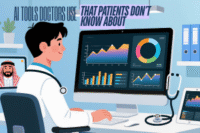Future of Cloud Security-Top Trends to Watch
Published: 26 Oct 2025
The world of cloud security 2025 is moving fast. New tools bring power, but also risk. The future of cloud security depends on how we face these changes. AI is reshaping defense. Multicloud security risks are growing. Identities are harder to manage.
Security teams now battle cloud misconfigurations, hidden gaps, and evolving threat actors. Strong cloud defense strategies and better cloud security visibility are no longer optional. They are survival needs.
This article explores the key trends shaping tomorrow. From AI-powered defense to the Zero Trust security model, you’ll see what matters most. Stay with us and learn the cloud security best practices that will define the year ahead.
The Pressure Points in Modern Cloud Environments
Cloud adoption is rising. But with growth come new risks. Two big pressure points stand out in cloud security 2025: AI in cloud security and multicloud security risks. Together, they shape the future of cloud security.

AI and Multicloud Complexity
AI is now part of almost every system. It helps with automated threat detection and AI in incident response. But it also creates fresh challenges. Hackers use generative AI threats and AI-driven attacks. These AI-native risks grow fast and target weak spots. Ai tools that work without internet are also available now.
At the same time, more firms are moving to hybrid cloud security. They run workloads across public and private platforms. This creates multicloud strategy challenges. Different tools, different rules, and different setups often clash. The result is cloud security complexity.
Without strong planning, firms face cloud configuration issues and overlapping policies in the cloud. These make it harder to keep cloud security visibility across systems. The more clouds you use, the more doors you need to lock.
Visibility and Tool Sprawl
Speed often beats safety in cloud projects. Leaders rush to deploy. They add tools quickly but forget about integration. This causes tooling fragmentation and leaves cloud security visibility gaps.
When tools don’t work together, teams miss warning signs. This weakens cloud defense strategies. Attackers find holes and create real-world security gaps. Many breaches link back to poor visibility, misaligned tools, or misconfigured IAM.
The lesson is clear. To stay safe, firms must slow down, connect their tools, and focus on complete visibility. Cloud security best practices demand a full view of users, data, and systems.
Key Trends to Watch in 2025
Cloud security is entering a new phase in 2025. The focus is shifting from traditional defenses to smarter, faster, and more adaptive strategies. Below are the five big trend pillars that will shape the future.
A. AI and Automation
Artificial Intelligence (AI) and automation are becoming the backbone of cloud defense.
- Smarter threat detection and response: AI and Machine Learning (ML) can spot unusual activity faster than humans. Instead of waiting for alerts, AI systems learn normal behavior in real time and raise red flags when something looks suspicious.
- Automated cloud security validation: Companies no longer want manual checks. Continuous posture checks, powered by automation, ensure that every system, workload, and data stream is secure at all times.
- Defensive AI to counter AI-driven threats: Attackers are also using AI to launch more sophisticated cyberattacks. In 2025, security teams are responding with their own AI tools—an “AI vs. AI” battleground.
B. Security Architecture Evolution
Cloud security structures are moving towards resilience and flexibility.
- Zero Trust everywhere: The “never trust, always verify” mindset is becoming the new default. Every device, user, and application must prove its identity before gaining access.
- Cybersecurity Mesh Architecture (CSMA): Security tools are no longer siloed. CSMA connects them into a flexible mesh, making defenses more adaptive and scalable across multicloud setups.
- Unified security platforms: Instead of juggling dozens of tools, companies are consolidating controls with platforms like CNAPP (Cloud-Native Application Protection Platform), SASE (Secure Access Service Edge), SSE (Security Service Edge), and SNAPP. These unified approaches save time and reduce weak spots.
C. Emerging Technologies for Data Protection
Data is the crown jewel, and new technologies are being built to protect it.
- Confidential computing: This technology keeps data safe even from the cloud provider. It encrypts workloads during use, not just at rest or in transit.
- Post-quantum cryptography: Quantum computers threaten to break today’s encryption. In response, researchers are building quantum-resistant algorithms to prepare for that future.
D. Identity, API, and Secrets Management
Digital identities and API connections are new pressure points for attackers.
- Adaptive IAM: Identity and Access Management (IAM) is getting smarter. Session-based access adapts to context—like location, device type, or time of login—before granting permissions.
- Secrets sprawl: API keys, tokens, and credentials are spreading across systems faster than teams can manage them. If one leaks, the entire system is at risk.
- API security spotlight: APIs are now a top attack target. In 2025, companies are making API protection a core part of their security strategy rather than an afterthought.
E. Persistent Vulnerabilities & Threat Landscape
Not everything is new—some old problems are still haunting the cloud.
- Misconfiguration and data exposure: Simple setup errors continue to cause major breaches. Even with better tools, human mistakes remain the weak link.
- AI-enhanced phishing and social engineering: Attackers are using AI to craft more convincing fake emails, messages, and voice calls, tricking employees into giving away secrets.
- Nation-state and supply chain threats: Governments and organized groups are targeting cloud providers, decentralized storage networks, and global supply chains. These high-level threats will remain a constant risk in 2025.
Together, these trends show one clear picture: cloud security in 2025 is not just about building higher walls—it’s about being adaptive, intelligent, and proactive.
Strategic Imperatives & Best Practices
As cloud threats grow in 2025, businesses cannot just chase trends—they need clear strategies. The following best practices will help organizations strengthen their defenses and prepare for what’s coming.
Visibility as a Cornerstone
You can’t protect what you can’t see. Visibility is the foundation of cloud security.
- Telemetry and observability give teams a complete view of data flows, workloads, and user behavior.
- Without visibility, attackers can move silently through systems.
- Full observability ensures security teams detect unusual patterns before they become breaches.
Think of it as turning on the lights in a dark room—you immediately spot what doesn’t belong.
From Reactive to Proactive Security
Waiting for an attack to happen is no longer enough. Security must be proactive.
- Unified dashboards bring all security tools together in one place, reducing blind spots.
- Automated validation ensures that every control is always tested and working, not just assumed safe.
- Prevention first: Organizations should focus on fixing weak points before attackers can exploit them.
Proactive security shifts the mindset from “cleaning up after a fire” to “fireproofing the building.”
Partner Ecosystems
No single company can handle every threat alone. Strategic partnerships make defenses stronger.
- Leading vendors are joining forces—like Trend Micro and Google Cloud teaming up to enhance AI-driven cloud security.
- Partner ecosystems allow organizations to use the best tools from multiple vendors, integrated into one system.
- Collaboration also accelerates innovation, bringing faster updates and better coverage.
The future of security is not about working in silos—it’s about building trusted alliances.
Skills & Organizational Readiness
Technology alone is not enough; people and processes matter just as much.
- Teams must be trained to work with Zero Trust models, AI security tools, and unified platforms.
- Regular skill upgrades help staff stay ahead of new attack techniques.
- Organizational readiness means creating a culture where security is everyone’s job, not just the IT team’s.
In short: the best technology is wasted if the team isn’t prepared to use it effectively.
By focusing on visibility, proactive defense, partnerships, and skilled teams, organizations can build cloud security strategies that don’t just react to threats—they stay ahead of them.
Looking Ahead: What’s Next Post-2025
Cloud security will not stop evolving in 2025. New technologies and threats are already shaping the next stage. Organizations must look ahead and prepare for what’s coming after 2025.
Edge AI and Distributed Compute
The rise of edge AI means data will no longer stay in central clouds only. More processing will happen at the edge—closer to users, devices, and sensors.
- This brings speed and efficiency.
- But it also opens more attack surfaces. Every new device or edge node can be a target.
- Protecting distributed compute will require stronger AI-powered defense and real-time monitoring.
Companies must secure not just the cloud, but every edge point where data flows.
Secure Browsers and Hardened Endpoints
Users are often the weakest link. In the coming years, focus will shift to securing browsers and devices.
- Secure browser adoption will grow as more apps run in the cloud. These browsers reduce risks from phishing, malware, and unsafe sites.
- Hardened client endpoints—laptops, mobiles, IoT devices—will get stronger security built in.
- This reduces the chance of attackers using weak devices to enter the cloud.
The goal: protect users where they connect, not just where data lives.
Hardware Optimizations and Confidential Computing
Hardware will also play a bigger role in cloud security.
- Confidential computing ensures sensitive workloads are safe, even from cloud providers themselves.
- New hardware features will improve both performance and security.
- Cost, speed, and protection will drive adoption of these optimizations.
This means that cloud security will move deeper into the hardware layer, not just software.
Post-2025, success in cloud security will depend on preparing early. Companies that invest now in edge AI protection, secure browsers, hardened endpoints, and confidential computing will be ready for the challenges of tomorrow.
Conclusion
Cloud security is entering a new era. AI in cloud security, Zero Trust security models, and stronger ways of handling multicloud security risks are no longer optional—they are must-haves. The road ahead will bring AI-driven attacks, identity misconfigurations, and cloud vulnerabilities 2025, but it will also bring smarter defenses, confidential computing, and new security models. Organizations that act now—by improving cloud security visibility, reducing cloud misconfigurations, and adopting cloud security best practices—will not only survive but lead in this changing world. The future of cloud security is not just about tools, it’s about readiness. The time to prepare is today.
FAQs
The future of cloud security 2025 is all about smarter defense and stronger visibility. Companies will use AI-powered defense and the Zero Trust security model to fight AI-driven attacks and cloud vulnerabilities 2025. More focus will be on multicloud security risks, where tools and policies often overlap. The winners will be those who adopt cloud security best practices early.
AI in cloud security is changing everything. Hackers are using generative AI threats to create smarter attacks, but defenders are also using AI-powered defense for faster detection. Automated threat detection helps security teams catch problems before they spread. By also securing AI models, organizations can avoid new AI-native risks.
The Zero Trust security model means “never trust, always verify.” In 2025, it’s becoming the default way to protect systems. Real Zero Trust case studies show that it stops overprivileged accounts and identity misconfigurations from turning into breaches. With adaptive access control, users only get the exact access they need—nothing more.
Managing many cloud providers brings big challenges. Common multicloud strategy challenges include tooling fragmentation, cloud configuration issues, and overlapping policies in the cloud. These create cloud security visibility gaps and leave open doors for hackers. To reduce these risks, teams must simplify tools and improve managing multicloud environments.
Cloud misconfigurations are one of the top causes of breaches. Mistakes in identity and access management (IAM) or bad settings in storage can lead to real-world security gaps. Fixing them requires continuous checks and automated cloud security validation. Teams also need to train staff to spot and prevent these cloud breach risks early.
Cloud identity management is the hardest problem in the cloud. Weak or misconfigured IAM can lead to overprivileged accounts, making attacks easier. Strong identity and access management (IAM) systems help control who gets in and what they can do. By adding adaptive access control, companies can reduce securing cloud identities risks.
Strong cloud defense strategies in 2025 focus on visibility, automation, and prevention. Companies must use cloud security visibility tools, unify dashboards, and rely on AI in incident response. Shifting from reactive to proactive steps means spotting cloud vulnerabilities 2025 before hackers do. This is how smart organizations stay safe.
AI-powered defense can see patterns humans miss. It makes automated threat detection faster and more accurate. During an attack, AI in incident response helps teams react quickly. At the same time, AI-driven attacks are rising, so building secure systems and securing AI models is key for balance.
Cloud security complexity comes from too many tools and not enough integration. This causes cloud security visibility gaps and real-world security gaps. To fix this, teams must streamline tools, avoid overlapping policies in the cloud, and focus on unified platforms like CNAPP or SASE. Less complexity means stronger protection.
To prepare for cloud vulnerabilities 2025, companies need to think ahead. That means adopting cloud security best practices, improving cloud identity management, and testing for misconfigured IAM regularly. They must also be ready for AI-enhanced phishing and other evolving threat actors. Staying updated with events like the SANS Institute cloud event gives leaders the knowledge to respond faster.

- Be Respectful
- Stay Relevant
- Stay Positive
- True Feedback
- Encourage Discussion
- Avoid Spamming
- No Fake News
- Don't Copy-Paste
- No Personal Attacks

- Be Respectful
- Stay Relevant
- Stay Positive
- True Feedback
- Encourage Discussion
- Avoid Spamming
- No Fake News
- Don't Copy-Paste
- No Personal Attacks





